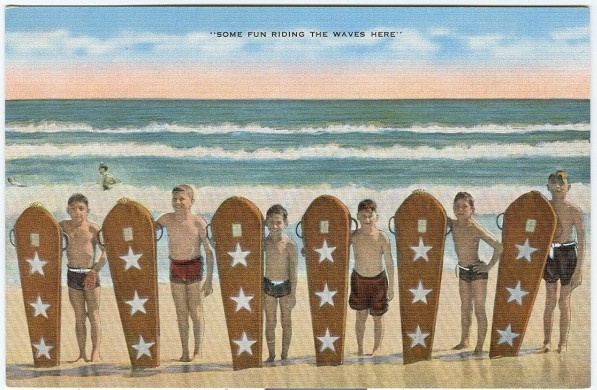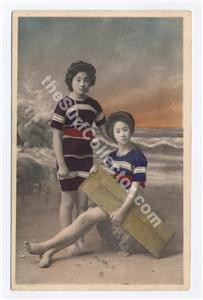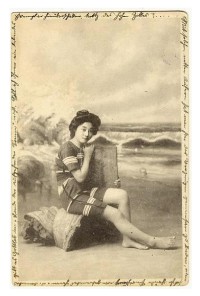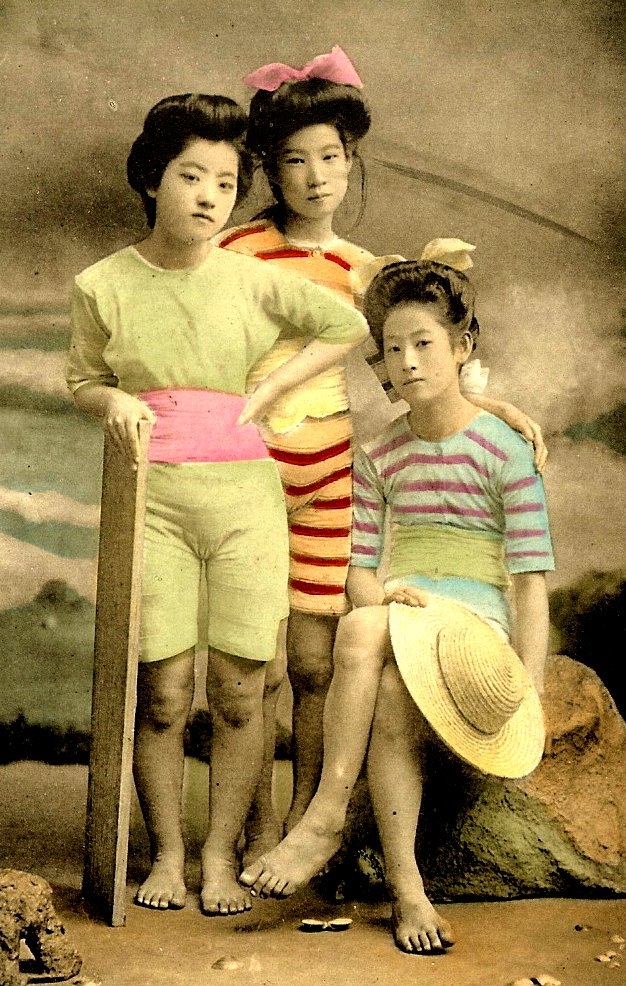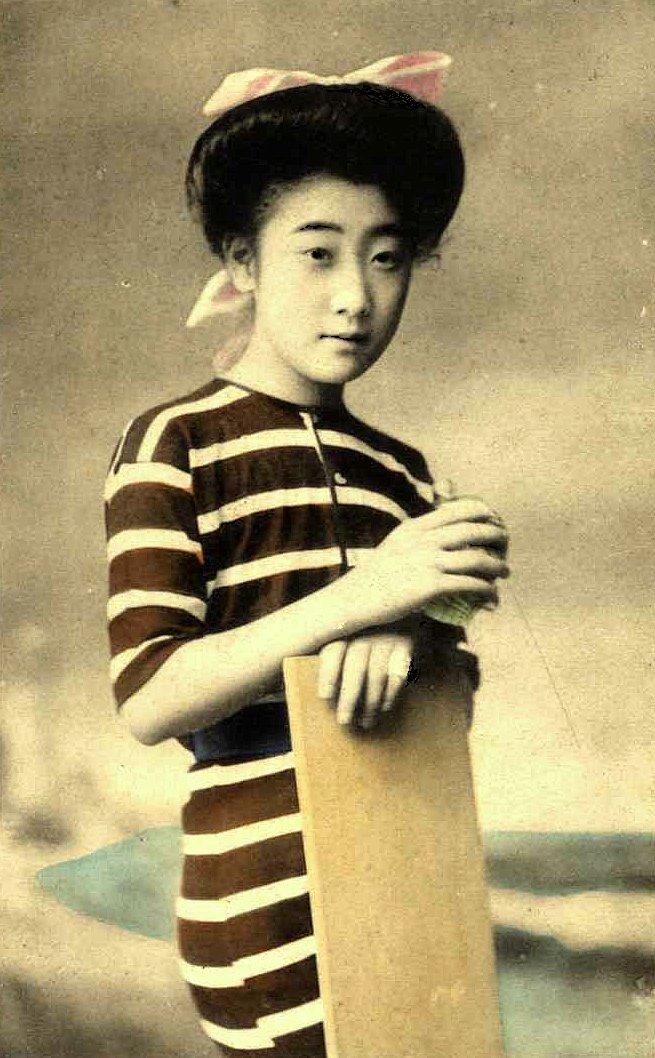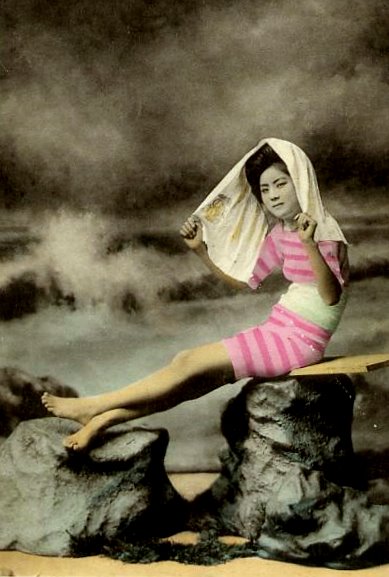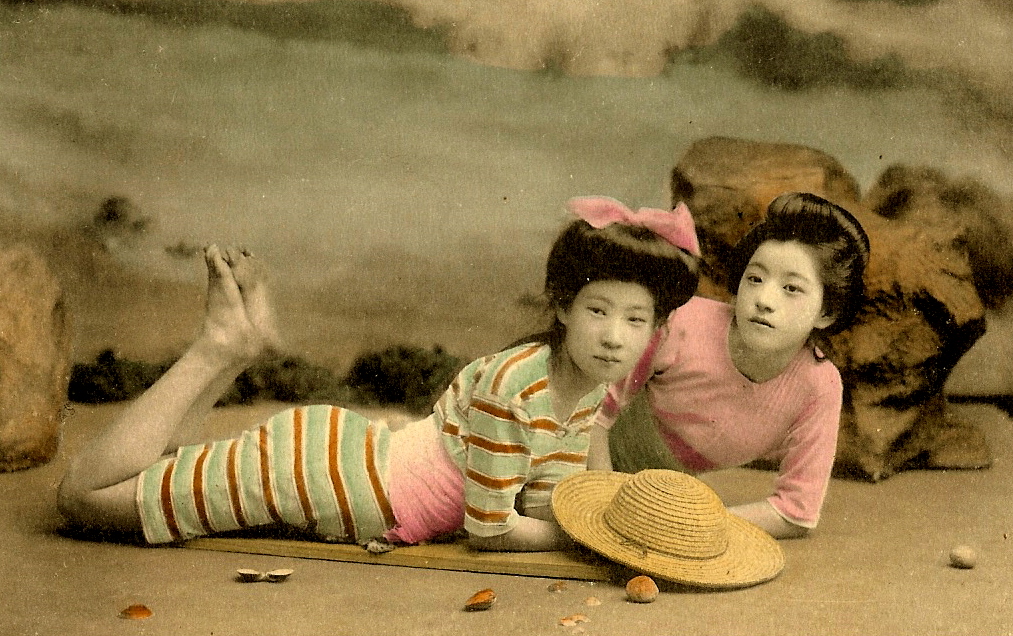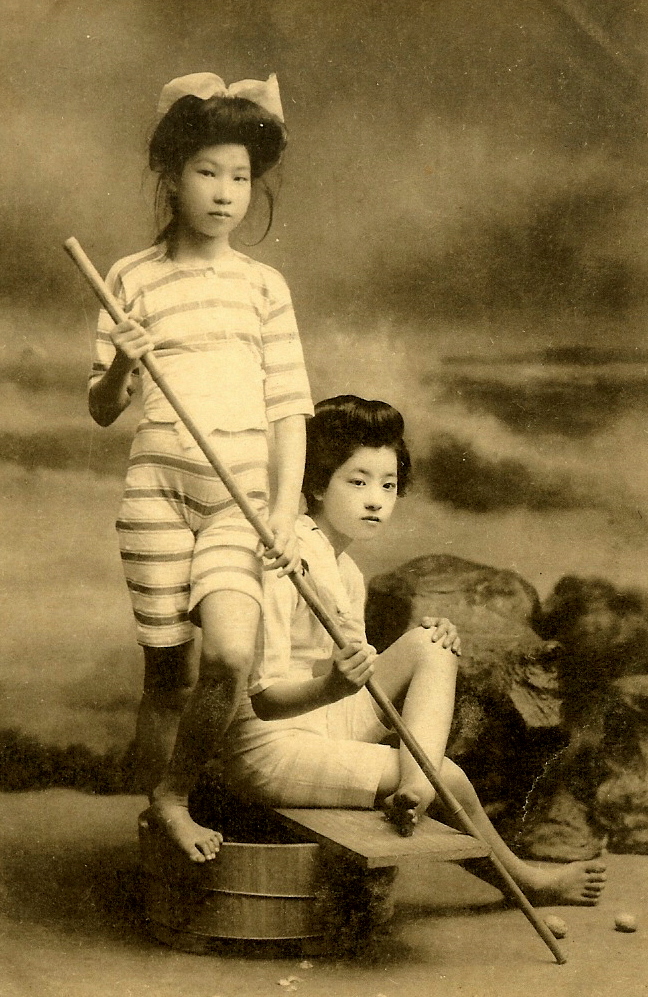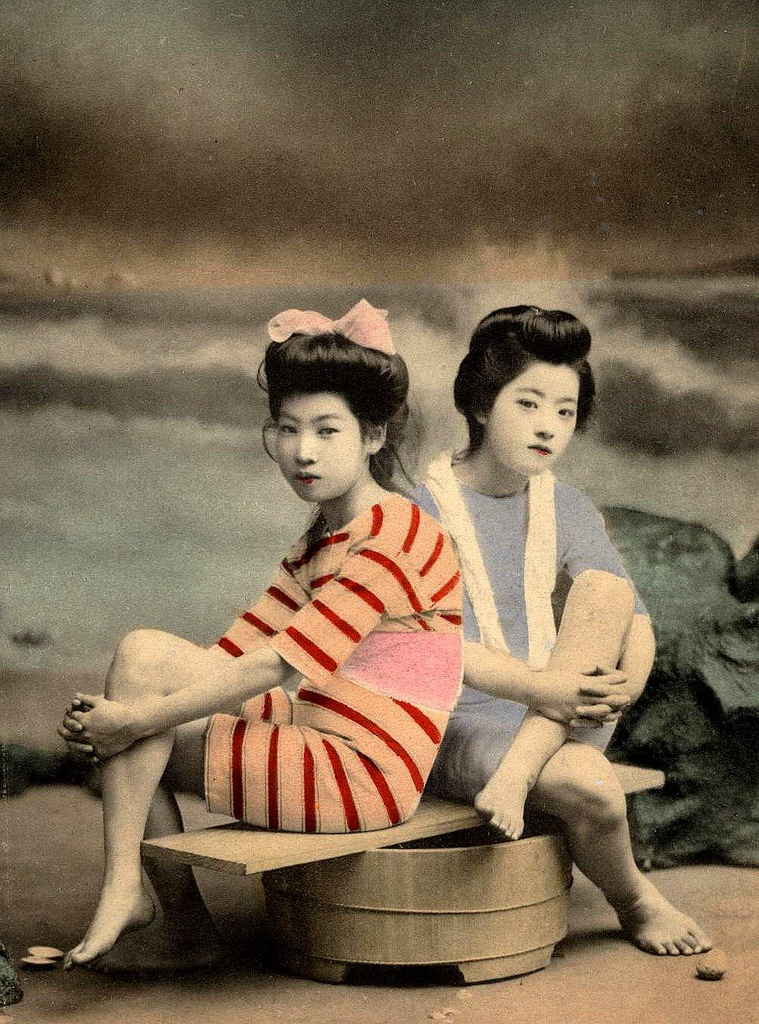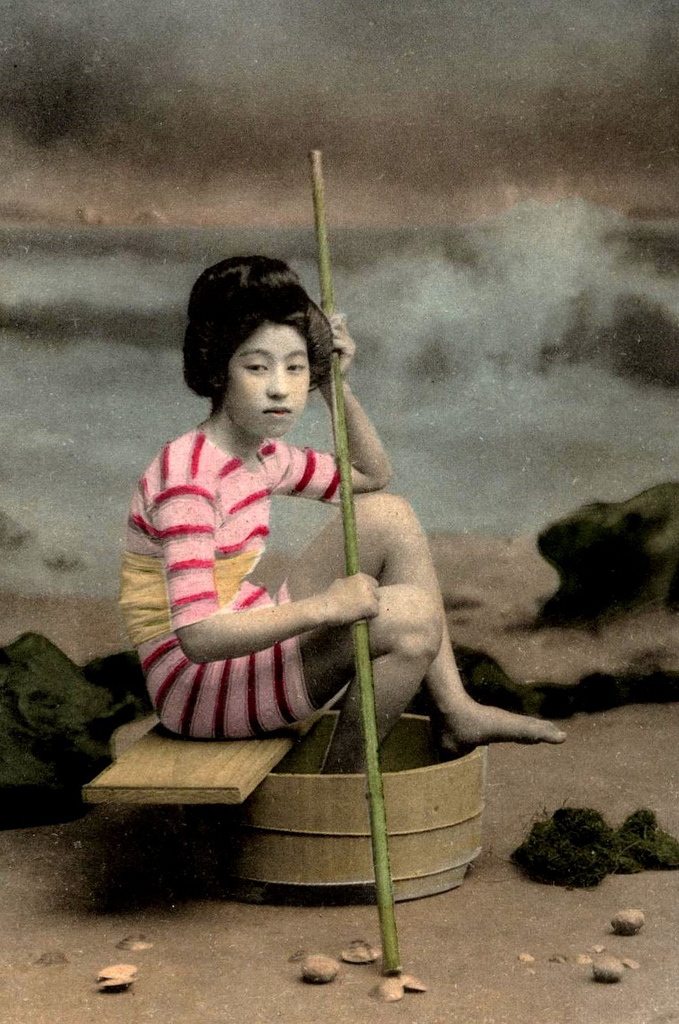Table of Contents:
|
|||
Wood plank bellyboarding, Italy, hand drawn, ca. July 10, 1906 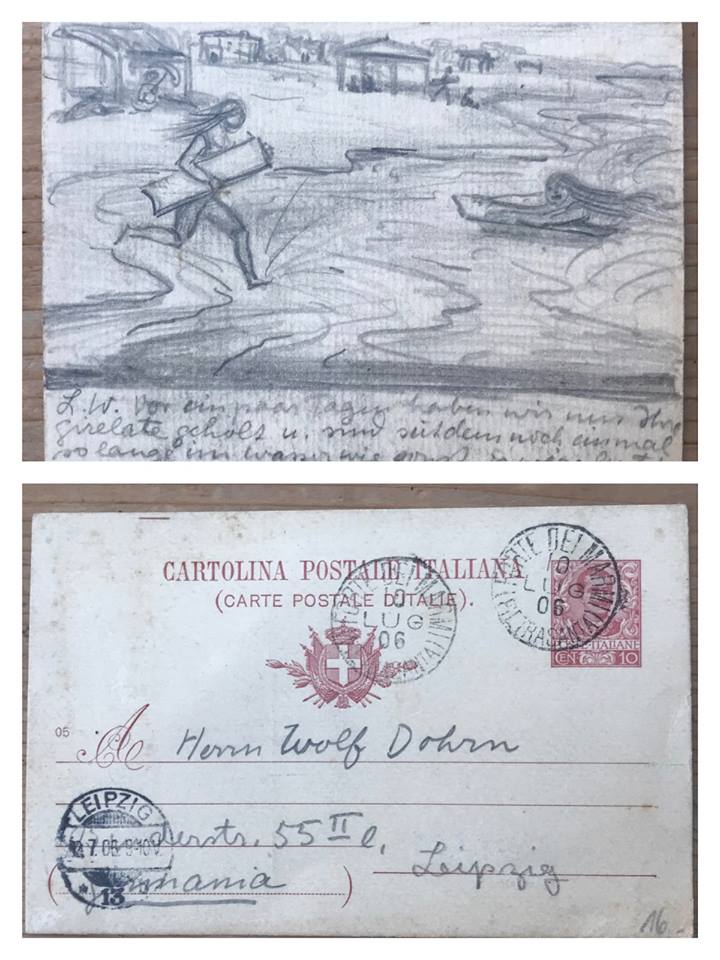 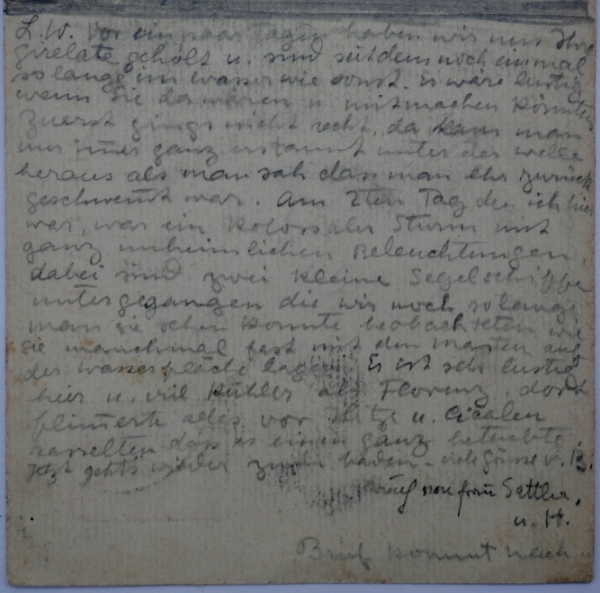 Hand drawn postcard, posted in Italy at Forte dei Marmi, Tuscany in July 1906.Posted to Facebook by Charlie Spurr, who bought the postcard on ebay (Germany). Charlie comments, "Belly boarding was invented by the Hawaiians thousands of years ago and started to take off in the the UK in the early 1900’s. It appears it was also popular on the continent." Awaiting translation. The card has not been authenticated but it certainly seems authentic. Translation might provide more context. Images and translation courtesy of Charlie Spurr. Bodyboarding North Carolina, ca. 1907 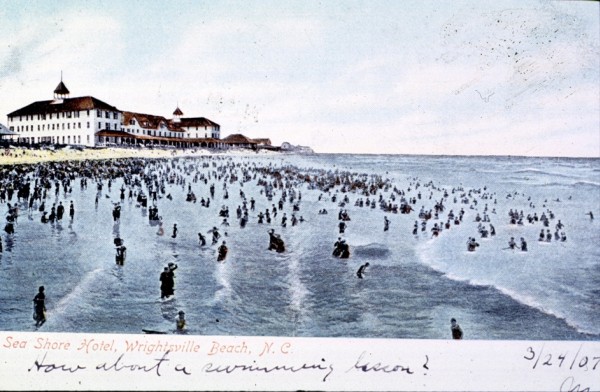 Skipper Funderburg, author of Surfing on the Cape Fear Coast, recently discovered a 1907 surfing photo postcard view of people surf bathing on the ocean side of the Sea Shore Hotel, including a surfer on a Hawaiian styled body board on Wrightsville Beach. For more info see the article from Global Surf News [reprinted as a PDF file here]. Post card image courtesy of New Hanover Public Library, Robert M. Fales Collection. See Funderburg, Joseph. Surfing on the Cape Fear Coast. Carolina Beach, N.C.: SlapDash Publishing, LLC, 2008. Bodyboarding Muizenberg, South Africa, ca. 1908 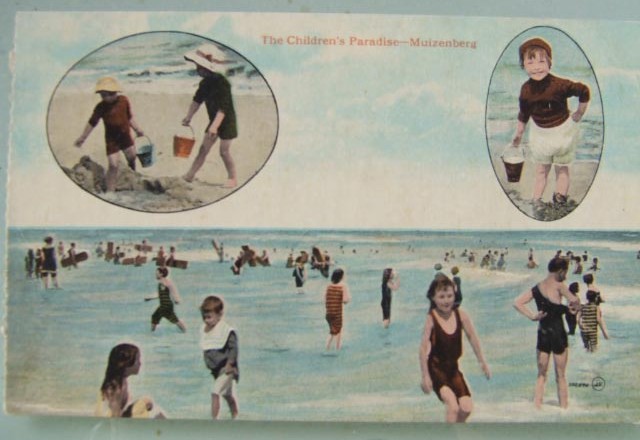 This postcard represents one of the earliest photo postcard records of paipo boarding (bellyboarding). Of special note are the jigsaw puzzles of bodyboarding in Muizenberg -- see The Paipo Jigsaw Puzzles. Post card dating and image courtesy of Gary Clist. Diamond Head and Surf Board Riding, Honolulu, ca. 1910-1915 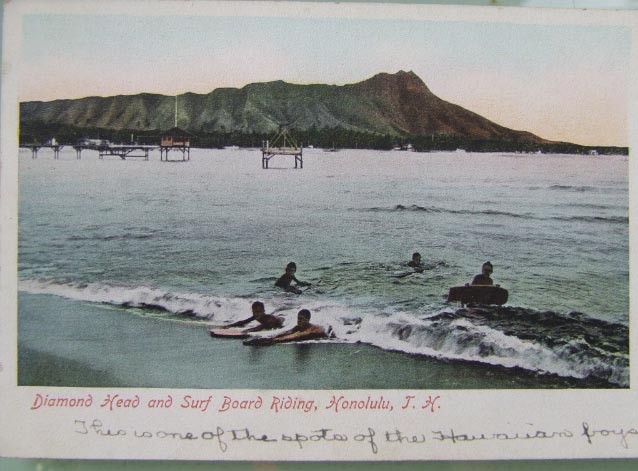 Post card dating and image courtesy of Gary Clist. Surf Riding at Waikiki, Honolulu, ca. 1910-1915 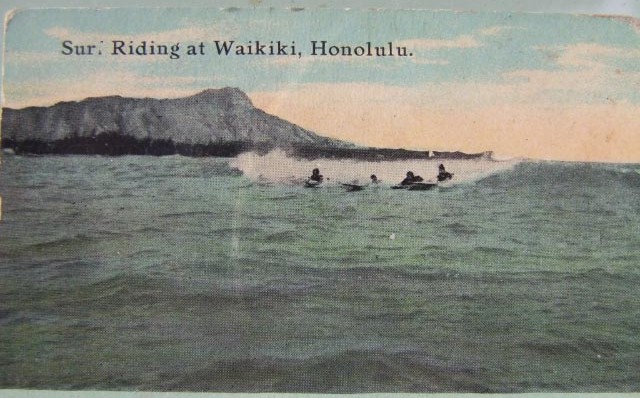 Post card dating and image courtesy of Gary Clist. Paipo Board Riding in Honolulu, ca. 1915 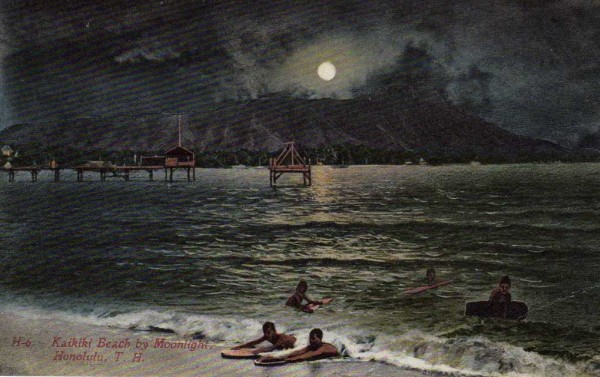 Post card image courtesy of Mr. Mike, Coronado, CA. Bodyboarding England, ca. 1920s 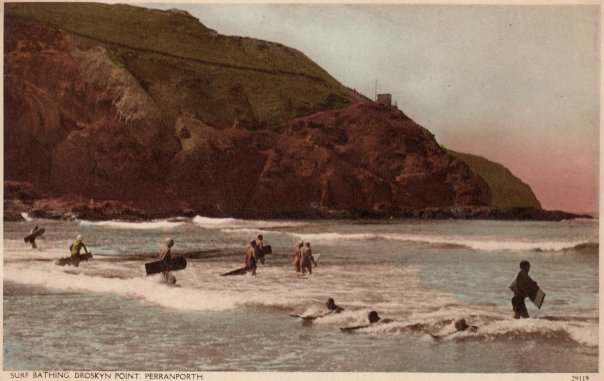 Pete Robinson of the British Surfing Museum has unearthed some great shots of bodyboarders surfing English waters in the 1920s. Source: http://www.thesurfingmuseum.co.uk/history.asp Bodyboarding England, ca. 1920s 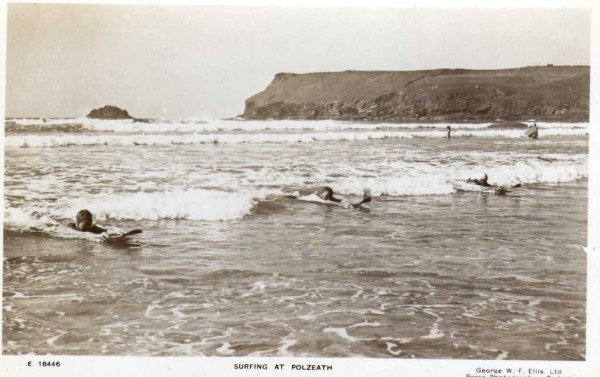 Post card image courtesy of Mr. Mike, Coronado, CA Surfers at Perranporth, Cornwall (England), ca. 1922 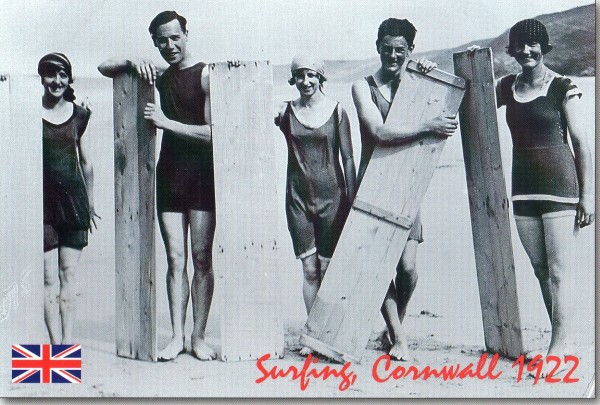 Postcard courtesy of John Heath. Bodyboarding North Carolina, ca. 1920s 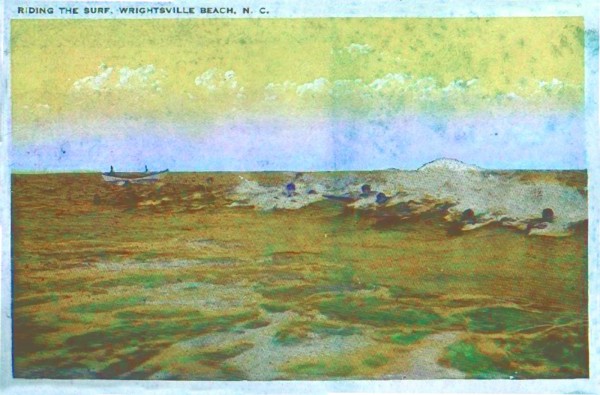 The post card is identified as being printed sometime in the 1920s. Exact date is still being researched. It clearly shows kids riding wooden paipo's (bodyboards) and at least one alaia-sized board. Posted on the Legendary Surfers Blog, February 22, 2009. Post card image courtesy of Skipper Funderburg. See Funderburg, Joseph. Surfing on the Cape Fear Coast. Carolina Beach, N.C.: SlapDash Publishing, LLC, 2008. Surfing at Muizenberg, ca. 1929 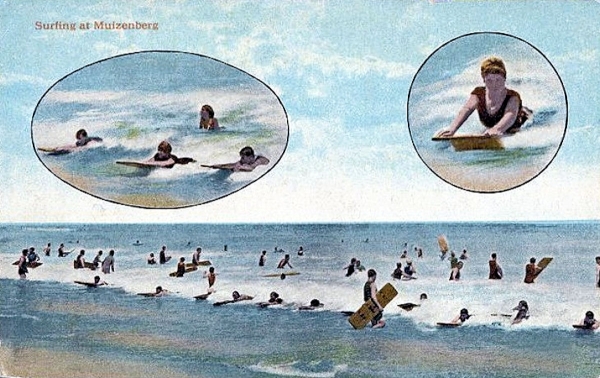 Post card image courtesy of Hilton Teper of the UK, formerly of Cape Town, South Africa. Hilton spent much of his youth, in the summer months, at Muizenberg (pronounced Mew-zin-berg), in False Bay, where he notes the water temperature is very warm.
Japanese Paipo Postcards From Early 20th Century The appearance of postcard for sale on eBay featuring a Japanese woman holding a surfing board (called itako) and subsequently appearing on Joe Tabler's weekly Surfblurb sparked a huge discussion within the surfing world regarding the origins of waveriding in Japan. Needless to say much has been learned since Winter of 2012. 1903 Japanese Surfer Girls & Surfboard (Itako)
1911 Japanese Girl holding a paipo board (Itako) The Surf Blurb, as of Feb. 29, 2012 and March 5, 2012: Regarding the Japanese postcards from last Blurb: Skipper Funderburg: I have several vintage images in my North Carolina collection that look "identical" to the piece of wood in the 1911 image. My images are taken on the beach at Wrightsville Beach, North Carolina, about the same era or before with swimmers and lifeguards. In my book, Surfing on the Cape Fear Coast 2008, I wrote, "It may be correct to surmise that swimmers sustaining themselves on wooden floats existed long before written records on the Cape Fear Coast. It is only common sense that wooden floats had a very important place in the life of those that lived by the sea. So it cannot be interpreted as something disingenuous, let us say for documentary proof, your author presents what is in the written record." Most surf historians interpret my images, as more related to swimming, like a kick board. At this point, I would venture to say, the 1911 images may be considered flotation device too. During my many oral history interviews with nonagenarian natives of the Cape Fear Coast, I identified the word "boards." John Elwell: The Japanese girls in the photo have a simple wooden rectangular plate that has been milled and will plane in small waves. What is not known is the who, where, and when of the photo which is really intriguing. They were indeed ahead of their time! Desoto Brown: 1) "Glasgow 1903", written on the back on the back of this card, is in ballpoint pen. Ballpoints were not common until the 1950s, so that means this was written in that decade at the earliest. Thus the writing is not as old as the card itself. 2) My own suspicion is that, judging from the bathing suits the two girls are wearing, this image dates from the late teens at the earliest and might even be from the early 1920s. That they also have traditional elaborate Japanese-style hairdos suggests it's not from too much later, because short hair became popular in Japan for young women by the middle to late 1920s. But the point is, I do not think the photo is from 1903. 3) The presence of the "paipo" (which I'd use advisedly, since this looks like just a plain unshaped plank of wood) is pretty much just a photo studio prop, I believe. Pretty girls in bathing costumes were going to be a popular subject for postcards in Japan and everywhere else in the world, and like every other photo studio setting, props could be added whether they were relevant or not. So while I doubt that these particular 2 girls really had anything to do with swimming or surfing at all, I do think it's interesting that a photographer in Japan would be familiar with any kind of surfing items at all. It does suggest that surfing existed in some form in Japan at that time, or at least the awareness of it. Hal Forsen: In Matt Warshaw's Encyclopedia of Surfing, the Japan section begins with: "Evidence suggests that Japanese fisherman were riding waves on small wooden bellyboards as early as the 12th Century............... " From Sandy Hall: Beautiful! Who called these paipo? Not accurate in my opinion, I would call these bathing boards -- popular thru'out the eastern USA at this time too and EARLIER also. usually just a piece of wood lying around to help learn to kick in a stream, river, pond or ocean. What makes this lovely to me, is that someone bothered w/a studio (at a popular beachside) and made it into a setup for which people paid money. These ladies may never have put their dainty toes in the water, nor used a board. From Geoff Cater: 44 swimsuit girls of Old Japan: http://www.flickr.com/photos/24443965@N08/2336937010/in/set-72157604130143141/ Notes beneath some of the 'Beauties': And: I do have a reference to surf-bathing in Japan, circa 1857. These people are, like most Orientals, a nation of ducks, - their greatest luxury consisting in vapour, warm, or surf bathing,- and much of their time is devoted to their enjoyment. - pages 241-242 Surf-bathing seems to be peculiar to the lower classes that reside near the sea; and it is probably the attendant exposure which bronzes the skins of those who indulge in it, until the stranger wonders why the natives along the coast are so much darker than those of the interior. I have seen as many as several hundred men, women, and children,- the entire population of villages, apparently,- rolling about in the surf in one promiscuous heap, and all the while yelling and screaming like so many savages. - page 246 Habersham, Alexander Wylly: My last cruise; or, where we went and what we saw: being an account of visits to the Malay and Loo-Choo Islands, the coasts of China, Formosa, Japan, Kamtschatka, Siberia, and the mouth of the Amoor River. J. B. Lippincott & co., Philadelphia, 1857. (An account of the travels of the United States North Pacific Surveying and Exploring Expedition 1853-1856.) www.google.com.au/books Tabler, Joe. (2012, February) The Surf Blurb. Surfbooks.com: Surfing books, magazines, cover galleries, surf blog. Retrieved February 29, 2012 and March 5, 2012, from http://www.surfbooks.com/misc.htm. Other postcards added from the Flickr.com website, by Okinawa Soba (No real name given). "SWIMSUIT GIRLS of OLD JAPAN." The dialogue on Joe Tabler's Surf Blurb continues (blurb email of March 26, 2012) Who knows where this will lead to next? Postscript: A good place to start is the history of Japanese waveriding website operated by Nobuhito "Nobby" Ohkawa. |
|||
|
Feel free to send me suggestions for additions to: The Paipo Postcards. |
